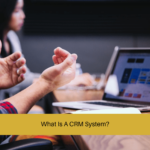
A Sales Meeting Agenda Example – A Guide
Special note; print out this article and sales meeting agenda example, practice it, and take notes for your own sales team meetings.
Sales meetings play a crucial role in the success of any sales team.
They provide an opportunity for team members to align their efforts, share updates, and collaborate on strategies to drive revenue growth.
However, without proper planning and structure, sales meetings can quickly become unproductive and fail to achieve their objectives.
In this article, we will discuss the importance of sales meetings and provide you with a practical example of a sales meeting agenda that can help you conduct effective and engaging sales meetings.
Introduction
Sales meetings serve as a platform for sales teams to come together, discuss important matters, and work towards achieving common goals.
These meetings are not just a time to discuss numbers; they also foster team spirit, enable knowledge sharing, and promote problem-solving.
By having a well-planned agenda, you can ensure that your sales meetings are productive, informative, and engaging for all participants.
Importance of Sales Meetings
Sales meetings are essential for several reasons.
Firstly, they provide an opportunity for the sales team to stay updated on the latest developments, such as new product launches, marketing campaigns, or changes in the competitive landscape.
Regular updates ensure that everyone is on the same page and working towards common objectives.
Secondly, sales meetings enable the team to discuss challenges and opportunities.
By creating an open and inclusive environment, team members can share their experiences, brainstorm solutions, and learn from each other’s successes and failures.
This collaboration can lead to innovative ideas and strategies that drive sales growth.
Additionally, sales meetings help to foster a sense of unity and camaraderie among team members.
When individuals gather regularly, they build stronger relationships, which can positively impact teamwork, motivation, and overall job satisfaction.
It also allows for recognition and celebration of individual and team achievements, boosting morale and motivation.
Preparing for a Sales Meeting
Before diving into a sales meeting, it is crucial to set the stage and make the necessary preparations.
Here are some key steps to follow:
Defining the Meeting Objective: Clearly define the purpose of the sales meeting.
Are you aiming to review performance, strategize for upcoming opportunities, or address specific challenges?
Having a clear objective ensures that the meeting stays focused and productive.
Identifying Attendees: Determine who should be present at the meeting.
Invite relevant sales team members, managers, and any other individuals who can contribute to the discussions and decision-making process.
Be mindful of including key stakeholders and those responsible for implementing action items.
Scheduling the Meeting: Find a suitable date and time for the meeting that works for all attendees.
Consider time zones, availability, and potential conflicts.
Sending out a calendar invitation well in advance helps ensure everyone can plan accordingly.
Crafting an Effective Sales Meeting Agenda
A well-structured agenda is the backbone of a successful sales meeting.
It provides a roadmap for the discussions and keeps participants engaged.
Here’s an example of a comprehensive sales meeting agenda:
Welcome and Introductions
Begin the meeting by welcoming everyone and introducing any new team members or guests.
This helps create a friendly and inclusive atmosphere, setting the tone for productive discussions.
Review Previous Meeting Minutes
Take a few minutes to recap the key points discussed and decisions made in the previous sales meeting.
This ensures that everyone is up to speed and serves as a reminder of any action items that need attention.
Sales Updates and Key Metrics
Provide an overview of sales performance, including important metrics such as revenue, new customers, conversion rates, and sales pipeline.
This segment allows everyone to have a clear understanding of the team’s progress and identify areas that require improvement.
Discuss Current Challenges and Opportunities
Allocate time to discuss any challenges or obstacles faced by the team.
Encourage open and honest communication, and brainstorm potential solutions collaboratively.
Similarly, identify and explore any emerging opportunities that can be capitalized on to drive sales growth.
Share Success Stories and Best Practices
Recognize and celebrate individual and team successes.
Allow team members to share their success stories and highlight any strategies or tactics that have been particularly effective.
This not only boosts morale but also provides valuable insights and inspiration to others.
Collaboratively Problem-Solve
Identify specific issues or problems that require attention and engage the team in a problem-solving exercise.
Encourage brainstorming and open dialogue to explore innovative solutions.
This collaborative approach fosters a sense of ownership and commitment to finding resolutions.
Introduce New Products or Services
If there are any new products or services being launched, dedicate time to introduce them to the sales team.
Provide key details, benefits, and selling points to equip the team with the necessary knowledge to effectively promote and sell these offerings.
Training and Development Sessions
Allocate time for training sessions or skill-building activities.
This can include product knowledge training, sales techniques, or updates on industry trends.
Investing in continuous learning and development enhances the capabilities of the sales team and their ability to achieve targets.
Action Items and Next Steps
Summarize the key decisions and action items discussed during the meeting.
Clearly assign responsibilities, deadlines, and follow-up actions.
This ensures that the outcomes of the meeting are translated into actionable steps and progress can be tracked effectively.
Tips for Running a Successful Sales Meeting
Running a successful sales meeting involves more than just following an agenda.
Here are some tips to make your sales meetings engaging and effective:
Set Clear Expectations: Clearly communicate the purpose, objectives, and expectations for the meeting beforehand.
This ensures that attendees come prepared and are focused on the desired outcomes.
Foster An Open And Safe Environment: Create a safe and welcoming space where everyone feels comfortable sharing their ideas, concerns, and suggestions.
Encourage active participation from all attendees, regardless of their position or experience level.
Encourage Active Participation: Engage participants by asking open-ended questions, seeking their input, and encouraging them to share their experiences and insights.
This active involvement promotes collaboration and generates diverse perspectives.
Keep the Meeting Focused and on Track: Stick to the agenda and ensure that discussions stay relevant to the meeting’s objectives.
Avoid tangents or unrelated topics that can derail the focus and consume valuable time.
Utilize Visual Aids and Technology: Incorporate visual aids, such as charts, graphs, or slides, to enhance presentations and convey information more effectively.
Utilize technology tools like video conferencing, screen sharing, or collaboration platforms to facilitate remote participation and engagement.
Follow Up and Accountability: After the meeting, circulate meeting minutes or a summary that captures the key decisions, action items, and deadlines.
Ensure that everyone understands their responsibilities and follows through on their commitments.
Regularly follow up on progress and provide support or guidance when needed.
Sample Sales Meeting Agenda Example
Here is a sample sales meeting agenda based on the outline provided:
Welcome and Introductions
- Introduction of attendees and any guests
- Warm welcome and opening remarks
Review Previous Meeting Minutes
- Recap of decisions made and action items from the previous meeting
- Verification of completed tasks and outcomes
Sales Updates and Key Metrics
- Presentation of sales performance metrics and trends
- Analysis of key sales figures and benchmarks
Discuss Current Challenges and Opportunities
- Open discussion on challenges faced by the team
- Brainstorming potential solutions and opportunities for growth
Share Success Stories and Best Practices
- Recognition of individual and team successes
- Sharing of effective strategies and tactics
Collaboratively Problem-Solve
- Identification of specific issues requiring attention
- Group problem-solving exercise and idea generation
Introduce New Products or Services
- Presentation of new products or services
- Explanation of key features and selling points
Training and Development Sessions
- Skill-building activity or training session relevant to the sales team’s needs
- Sharing of industry updates and best practices
Action Items and Next Steps
- Recap of decisions made during the meeting
- Assigning responsibilities and setting deadlines
- Clarification of follow-up actions and expectations
Concluding This Sales Meeting Agenda Example
Effective sales meetings are essential for driving team alignment, fostering collaboration, and achieving sales targets.
By following this sales meeting agenda example, maintaining an inclusive environment, and incorporating interactive elements, you can conduct productive and engaging sales meetings that yield positive results.
Remember to adapt the sample sales meeting agenda to fit your team’s specific needs and objectives.
Regularly evaluate and refine your meeting format and agenda based on feedback and outcomes to continuously improve the effectiveness of your sales meetings.
For best results; print off this sales meeting agenda example, and use it to practice your sales meetings.
Sales Meeting Agenda FAQs
FAQ 1: How often should sales meetings be held?
The frequency of sales meetings depends on various factors such as the size of the team, the nature of the industry, and the pace of business.
However, as a general guideline, monthly or biweekly sales meetings are common.
Adjust the frequency as needed to ensure that meetings provide sufficient time for meaningful discussions and updates without becoming too frequent and burdensome.
FAQ 2: What should I do if some attendees are unprepared for the meeting?
If you encounter unprepared attendees, address the issue tactfully.
Remind the team in advance to come prepared and share any relevant materials or information.
During the meeting, emphasize the importance of preparation and encourage active participation to ensure that everyone contributes to the discussions.
FAQ 3: How long should a sales meeting last?
The ideal duration of a sales meeting depends on its agenda and the complexity of the topics being discussed.
As a general rule, aim for a meeting length of 60 to 90 minutes.
This provides sufficient time for meaningful discussions and engagement without causing fatigue or stretching attention spans.
FAQ 4: Are virtual sales meetings as effective as in-person meetings?
Virtual sales meetings have become increasingly common and can be just as effective as in-person meetings when executed properly.
However, to maximize effectiveness, ensure a stable internet connection, utilize video conferencing platforms with interactive features, and actively engage participants through polls, breakout sessions, or chat discussions.
FAQ 5: How can I make my sales meetings more engaging?
To make sales meetings more engaging, incorporate interactive elements such as group discussions, brainstorming sessions, role-playing exercises, or hands-on activities.
Encourage participants to share their experiences, ask questions, and contribute their ideas.
Utilize visual aids, technology tools, and diverse presentation formats to maintain interest and variety throughout the meeting.
Want To Close Sales Easier?
Are you committed to closing sales a lot easier, and consistently?
If so, you should check out our self-paced and affordable online sales training program; The 5% Sales Blueprint.
It’ll give you everything you need to close sales consistently.
To learn more, simply click on the link below for more information.
Our Online Sales Training Program – The 5% Sales Blueprint.



